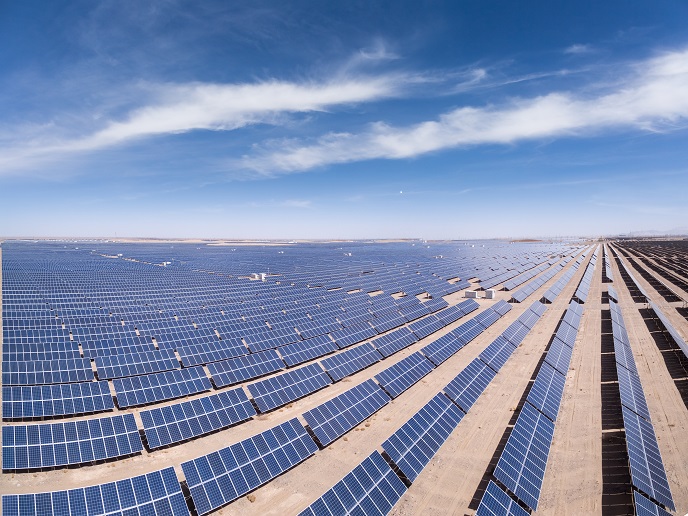Could a giant solar array in the Sahara resolve our energy needs?
Renewable energy is an essential factor in Europe’s goal of becoming the first carbon-neutral continent. The climate crisis and the soaring price of natural gas have placed renewed emphasis on the need to transition to a low-carbon energy system. Europe is on its way: of the 2 664 TWh of electricity produced in Europe in 2020, 34 % was provided by renewable sources. But while renewable energy is abundant, you still need to build the infrastructure to capture it. To meet Europe’s total energy demand with renewables alone would require a large number of infrastructure projects. Each of these would compete with other land uses, such as residential and industrial developments, agriculture and nature. There is, however, a large empty space with ample amounts of renewable energy nearby: Africa’s Sahara desert. Could one giant solar array there replace Europe’s energy generation? “If all the engineering, environmental and political challenges are fully addressed, then yes, sufficient energy can be generated in the Sahara using solar plants to cover a large fraction of the EU’s current electricity demand,” says Mahkamov, a professor of Mechanical and Construction Engineering at Northumbria University(opens in new window). “Considering that the total area of the Sahara is estimated to be around 9.3 million km2, and that it has an average insolation of 263 W/m2, and taking into account the current level of development and efficiency of today’s solar power technologies, then yes, the Sahara desert does present a huge potential for generating similar quantities of electricity, although with seasonal fluctuations,” he explains. But the devil’s in the detail.
Sun, sand and solar power
According to Mahkamov, before we can build a giant solar array in the Sahara, we must first research the long-term environmental and social impacts that covering such a vast area with photovoltaics would have. Then, there’s the issue of installing a large, critical infrastructure in such a remote and oftentimes harsh environment. A Sahara solar installation would also likely face a number of maintenance problems related to the detrimental effect of ongoing sandstorms and the continuous movement of sand across the desert. Furthermore, unlike the solar panels installed on a roof, solar megaplants have a range of unique requirements. “The conversion technologies must be diversified, and the deployment of a combination of different technologies is also needed to achieve robustness in energy production and full utilisation of an intermittent solar irradiation spectrum,” adds Mahkamov. Another issue that cannot be ignored is that building a mega solar installation in the Sahara would still leave Europe wholly dependent on foreign energy imports, and vulnerable to all the problems that come with such dependence.
The advantage of starting small
Mahkamov says the focus should be on expanding the solar infrastructure right here in Europe – a process that can start by installing solar plants in the vicinity of our own homes. As part of the EU-funded Innova MicroSolar project(opens in new window), a consortium led by Mahkamov developed a high-performance, cost-effective concentrating solar power system for small-scale, on-site electricity and heat generation. Instead of one giant array, imagine thousands of much smaller ones. “The system has the potential to provide the highest energy savings in southern EU countries, covering all electricity demand in some,” he concludes. “When used in a single-family dwelling, it reduces CO2 emissions by 70 to 95 % in southern locations, and about 30 % on average in other countries.” Click here to find out more about Mahkamov’s research: Small-scale solar systems with large-scale potential



